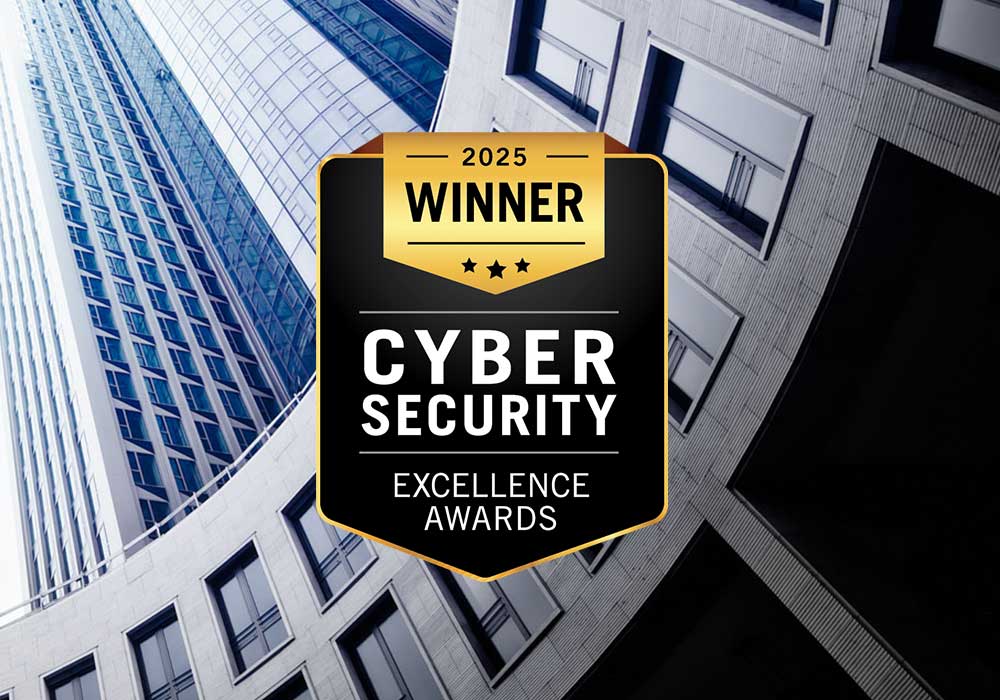
A lot of cyberattacks don’t start with nefarious hackers—most start with innocent people. Verizon’s 2024 Data Breach Investigations Report found that roughly 68% of breaches were caused by human errors or social engineering. These human-driven gaps can’t be fixed with software or applications alone, making security awareness training indispensable.
.png)
What is managed security awareness training (MSAT)?
For many years, cyber security training was treated as a box to tick off. “Training” was a loose term, with employers giving the HR or the IT department 15 minutes to present how-to videos, generic quizzes, and forgettable slide decks. But today’s threat landscape is too fast-moving and too fragmented for those “training sessions” to work. Managed security awareness training is a modern and proactive approach that turns employees into a scalable line of defense. Rather than static content, managed SAT programs are fully managed and are continuously optimized to fit your business needs. Claro’s solution, for instance, uses artificial intelligence to modify training models based on the following:
- Evolving threat patterns
- Role-based risks
- User behavior
You get customized security simulations, real-time feedback, and hands-free program management. These features remove the responsibility of training from your IT and compliance teams.
They are also designed to evolve as quickly as threats. And that’s vital, given that 40% of data breaches now involve data stored across multiple environments, as per IBM’s Cost of a Data Breach report. Breaches involving public cloud storage cost businesses $5.17 million on average. While you can’t control every system, with Managed Security Awareness Training, you can reduce risks at the human level.
Why is employee security awareness training important?
More than stopping malware, security awareness training aims to strengthen workers. Employees are often the weakest link in online security, and threat actors know that well. It’s the reason social engineering is at the heart of most cyberattacks. Employee security awareness training empowers your team to spot, withstand, and report threats before they become breaches.
The most common types of cyber threats
Here are 10 high-impact threats that modern SAT programs must cover:
- Malware - Malicious software designed to damage or disable systems; generally delivered via email or downloads.
- Ransomware - Encrypts data that often cripples operations; demands payment for release.
- Spear phishing - Targeted attacks by posing as a trusted contact to gather sensitive data or credentials.
- Whaling - Targets executives or high-value personnel to authorize financial transactions or share confidential information.
- Smishing & vishing - SMS-based and voice-based attacks that trick recipients to download malware or reveal data.
- Social engineering - Scamming or psychologically manipulating people into giving up access or info; often used in phishing
- Insider threats - Negligent employees or malicious contractors who compromise data or systems.
- Supply-chain attacks - Target third-party vendors to infiltrate systems through trusted connections
- Zero-day exploits - Attacks that exploit unknown software weaknesses before developers can fix them
- DDoS attack - Overwhelms networks or apps with traffic to disrupt business operations; exposes security weaknesses
The benefits of Security Awareness Training
When built around real business needs, employee cyber security awareness training programs drive measurable impact:
Reduce cyber insurance costs
Carriers now require proof of active and updated training programs and phishing simulations. Businesses with strong SAT programs can negotiate lower premiums. Why? Because well-trained teams reduce incident frequency, speed up threat detection, and minimize breach impact. All these lower the insurer’s risk. Some underwriters even use simulated phishing click rates as part of policy assessments.
Maximize ROI on existing tools
Most companies already have firewalls, endpoint protection, and access controls. However, these tools can only go so far. One wrong click by an untrained employee can override even the most advanced defenses. Awareness training protects your tech investment. When employees understand how threats work, they become an active layer of security, not a liability.
Strengthen resilience for audits and clients
Healthcare, finance, and other highly regulated industries require proof of active information security awareness programs as part of third-party risk assessments. In healthcare, HIPAA compliance demands ongoing training to protect patient data. And the stakes are rising—HIPAA Journal reported that the largest healthcare-related cyberattack in 2024 impacted over 190 million individuals. A strong employee SAT program helps you pass audits while also protecting your reputation with clients who expect serious risk management.
5 key components of an effective employee cyber security awareness training program
An effective employee SAT program is smart, flexible, and aligned with real-world threats. For it to work, the training can’t be an isolated event. SAT programs need to be integrated into your broader security strategy and evolve alongside threats. The most effective employee cyber security awareness training programs are built upon these five pillars:
AI-driven efficiency
Standardized training wastes time. Often, it misses high-risk users. On the other hand, AI-driven SAT programs use risk-scoring models to adjust training frequency and content. For example, a staff member who clicked a phishing link last month may get weekly simulations, while the rest stay on monthly cycles. This approach conserves team resources while keeping training efficient and behavior-focused.
Comprehensive reporting
Beyond completion rates, security team leaders need information that ties back to business risk. Advanced SAT tools track phishing response times, failure rates by employees, and the number of clicks on links in phishing emails. This detailed evaluation helps leaders optimize the program and report progress to auditors or executives. Comprehensive reporting also supports long-term planning, which is a vital part of building a phased cyber security strategy.
Extensive resources
Every role faces a unique risk. Developers need training on code injection tactics, while finance teams need training to detect CEO fraud. An exhaustive SAT platform includes varied assets, like videos, role-based modules, and simulations, to personalize learning at scale. This ensures relevance, improves retention, and reduces training fatigue across different departments.
Automated threat removal
Training paired with active defense is a solid proactive security approach. Platforms that automatically remove suspected phishing emails from inboxes can reduce exposure windows from hours to minutes. When employees receive suspicious messages, they’re trained to report them immediately. This creates a feedback loop that sharpens both user instincts and threat intel.
Customizable training
Tailored training matches specific threats to the relevant teams. For instance, HR teams may need extra training on spear phishing that is tied to job applicant scams. The engineering department may need customized modules on protecting access to internal tools and version control systems. This level of risk-aligned learning closes compliance and real-world gaps while supporting cross-departmental risk ownership.
What training topics should security awareness training cover?
Threat actors seek to exploit networks and user behaviors. This is why the most effective SAT programs focus on real-world scenarios that your employees face every day. Training should address habits, workflows, and vulnerabilities that traditional security tools don’t typically cover.
Password security
Weak passwords are a flaw, but they’re not the biggest risk. Cognitive overload is. When employees use dozens of tools across platforms, password reuse becomes an unintended habit. SAT programs must prioritize password management workflows. It’s not about reproaching poor habits but making good security practices easier and healthier to maintain.
Phishing awareness
In its Cost of a Data Breach report, IBM revealed that phishing-related breaches cost businesses an average of $4.88 million, a figure that could bankrupt even large organizations, let alone SMBs. Modern security awareness training must go beyond email. Phishing now appears as a Teams message, fake Zoom invite, or cloned app login page. With generative AI, attackers create convincing, human-like messages at scale. Training should shift from spotting red flags to recognizing emotional triggers: urgency, fear, and authority. Employees must learn to pause, verify, and reflect before responding.
Office hygiene
Hybrid work has blurred the boundaries between personal device use and professional environments. Employees might step away from unlocked devices during meetings or use personal gadgets with hidden malware. Training should emphasize real-life “what-if” moments that show how physical lapses in hybrid setups can create digital risks. For example, plugging a personal USB charger into a work laptop at a café could unknowingly introduce a virus into the system.
Data on the move
Data is never stationary. It’s moved, copied, downloaded, shared, deleted, and edited using personal smartphones, cloud-based apps, and on-site computers. Most of the time, these actions don’t have any malicious intent behind them. SAT programs must focus on data sensitivity awareness. This training helps employees understand what qualifies as sensitive data and why certain channels are unsafe more than others, even if they seem “normal.”
CEO/wire fraud
The rise of deepfake audio empowers attackers to impersonate executives more convincingly than ever. Aside from emails, awareness training should include voice authentication protocols, call-back procedures, and real-life scam stories that exploit authority dynamics inside organizations. Training must teach staff to slow down and validate unusual requests, even when they appear critical, urgent, or from higher-ups.
Measuring the effectiveness of employee security awareness training
Statista’s 2024 global survey shows that computer-based training remains the most widely adopted, followed by in-person training. Regardless of the delivery method, the most important question remains: is it working? Security awareness training only works if it changes behavior. To measure real success, you must track a mix of behavioral, performance, and outcome-driven metrics:
- Phishing simulation performance: Are users clicking phishing messages less over time? Are they reporting suspicious emails or messages faster? Track improvements via click rates, reporting rates, and response time.
- Security incident trends: Compare pre- and post-training incident reports. A drop in avoidable incidents, like misdirected emails or credential sharing, signals that employees are applying what they’ve learned.
- Pre- and post-training evaluations: Quiz your employees not just for compliance but also to keep track of knowledge retention. These assessments reveal training gaps as well. Segment the results by role or department to pinpoint where targeted reinforcement is required.
- Employee feedback loop: Let your employees answer surveys and present feedback to help you understand how confident they feel in spotting threats. Give them space to freely share which areas still feel unclear to them without fear of consequences.
- Compliance and completion metrics: These are basic yet vital benchmarks. High completion rates within deadlines show program engagement. When paired with the metrics above, they paint a fuller picture of how effective your SAT program is.
What to look for in a security awareness training vendor
The right security awareness training vendor for your business is one that can grow with your risk environment. A great, reputable vendor must:
- Reduce internal workload
- Leverage tools that integrate seamlessly with your existing tech stack
- Deliver measurable compliance and behavioral improvements
Look for a platform that uses AI to customize training, automate threat simulations, and deliver clear departmental reporting. Your chosen vendor should understand your industry’s regulatory demands. It should offer frameworks that support audits, certifications, or cyber insurance requirements.
Equally important is support. An enterprise-grade vendor, like Claro, offers round-the-clock assistance, tracks performance in real time, and proactively adapts the program as new threats emerge. Your SAT program partner should also offer a fully managed, end-to-end approach so your team can stay focused on strategy.
Final thoughts
Cyber security is both a technical and human problem. As threats grow more targeted and volatile, your people need training that evolves just as quickly and effectively. Claro helps you build a human-centered defense strategy. It delivers fully managed, AI-driven security awareness training that embeds security habits into your culture.
Ready to turn your workforce into your strongest layer of defense? Contact Claro now.
Insights
All the solutions for your business sector
Experience best-in-breed technology solutions.
Cyber Security

Cloud Services

Internet of Things

Managed Network

Managed IT Services

.png)



.png)





